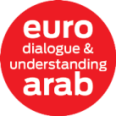Marieke Den Ouden in Morocco
Image 7: Photo by: Chuan-Yun, Hsieh. Visiting the Mothership in Tanger. All other images by Marieke den Ouden in Taza and the surrounding.
Would you also like to benefit from our Travel Grants? Our applications are open all year! Find out more about the application procedure and criteria here
A different country, a different continent – I didn’t know where I would live for the next seven weeks, which family I’d stay with, what language would be spoken, how I should dress, or what exactly we would be doing.
Thanks to the Lutfia Rabbani Foundation, I had the freedom to fully prepare and embrace the unknown.
During my time in Morocco, I learned by living differently and by experiencing things in a new context. From Africa, I looked toward Europe; from within an Islamic culture, I reflected on a Christian and more secular society.
I also started thinking about migration, borders, and the quiet power of a passport – my passport – and the political decisions behind it. Why can I stay here without a visa for three months, while the same access isn’t granted to Moroccan citizens? I reflected on the value of money: who determines it? The fragility of promises and the risks of miscommunication came up often. Many of the places we visited had previously hosted foreign guests like us – people who offered hope for collaboration or a return visit, but who often couldn’t fulfill those expectations. This made me more cautious about what I said. And I became increasingly aware of our consumer behavior in the Netherlands.
For my art project, I specifically wanted to work beyond the classroom. That’s why I connected with Asmaa from Au Grain de Sésame, a social enterprise that develops innovative, sustainable products in collaboration with local craftswomen. She trains women to become financially independent. Asmaa was a valuable partner in this new country and unfamiliar culture. Asmaa’s work – combining craft, innovation, and economic independence – was truly inspiring.
I realized how challenging it is to work as a designer in a post-colonial context. What is appropriate? What is the unspoken visual language? And how do you collaborate on equal footing?
This experience shaped my way of thinking. It helped me understand how art can be a powerful tool for education and dialogue. Going beyond borders and embracing discomfort became an invitation to challenge myself, broaden my perspective, and connect deeply with others across cultures.








